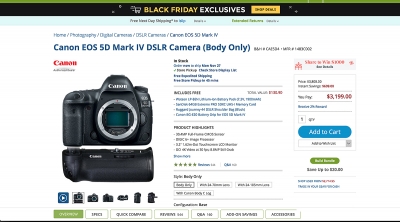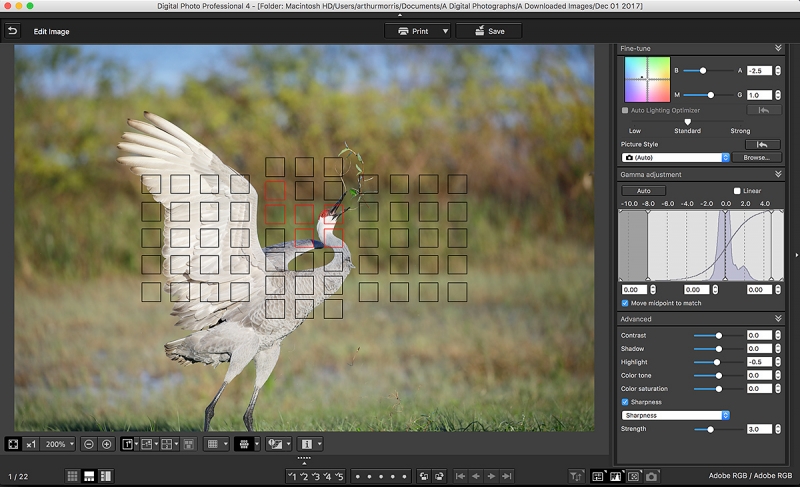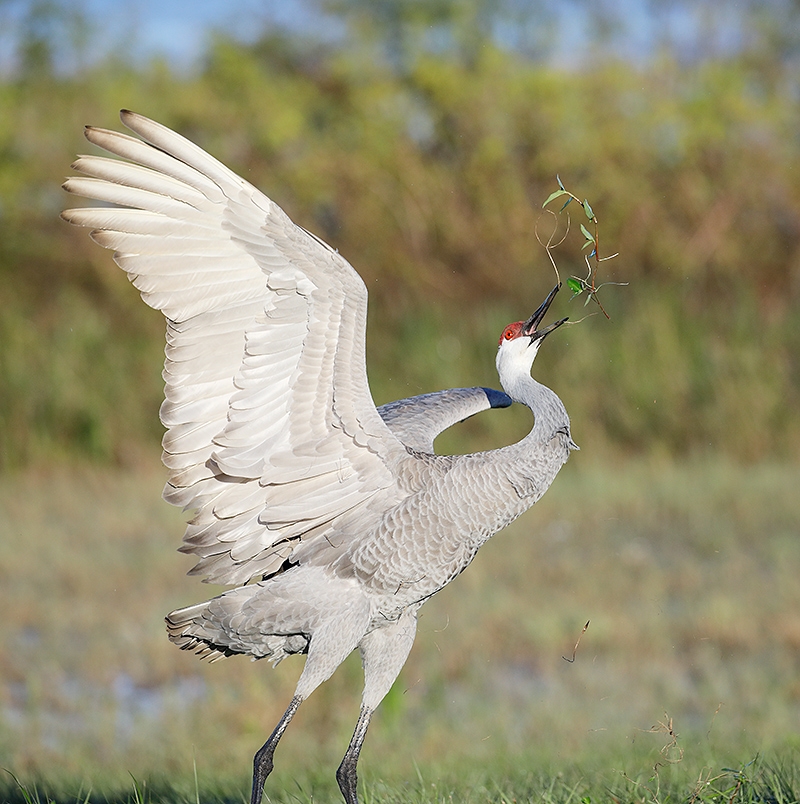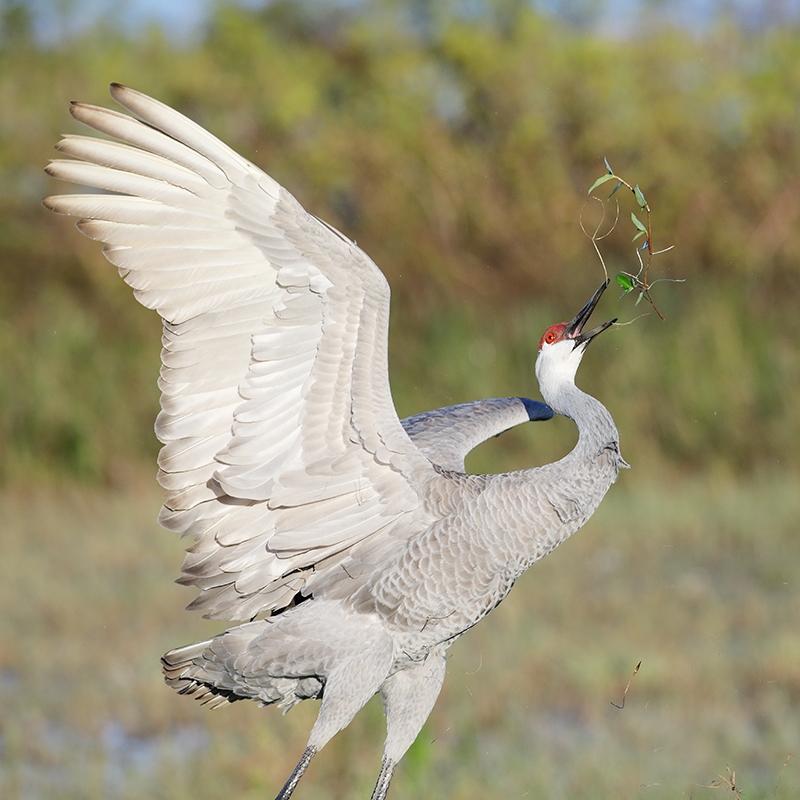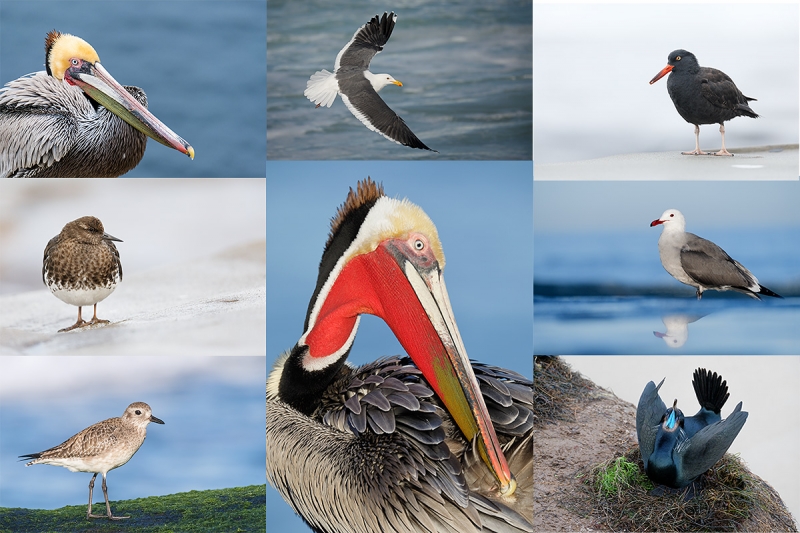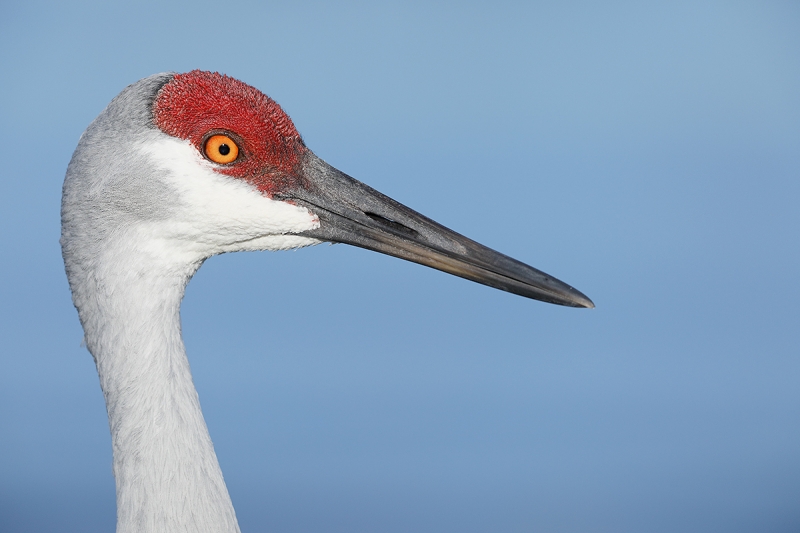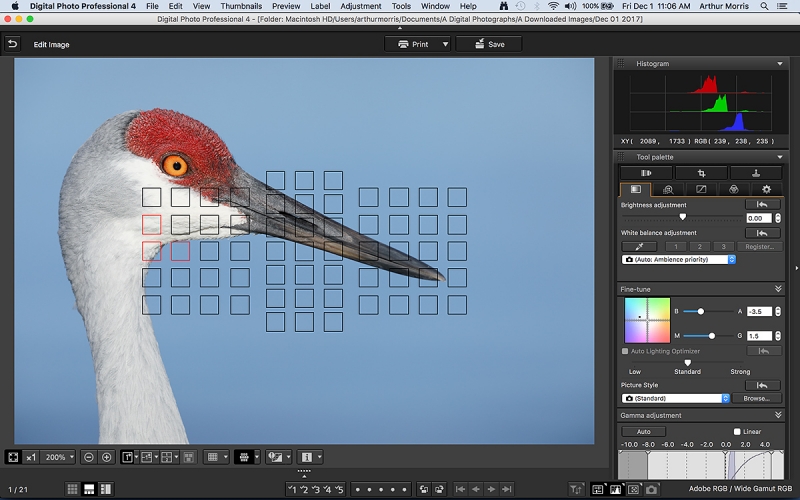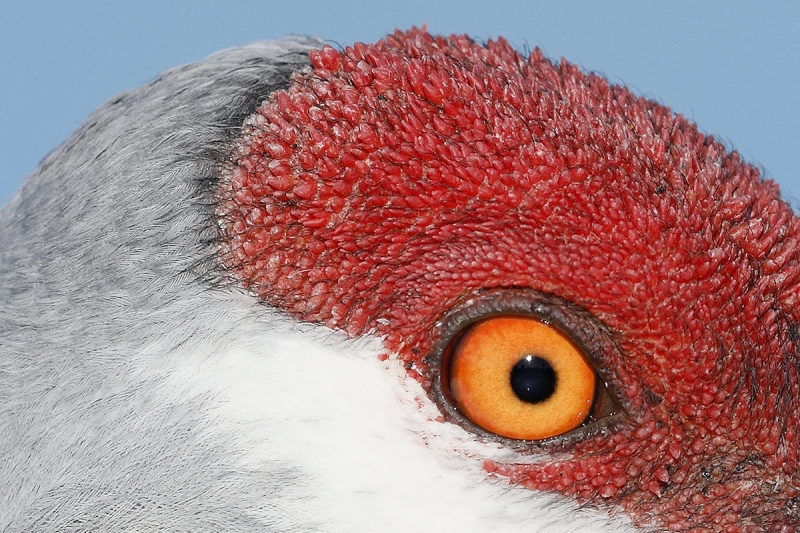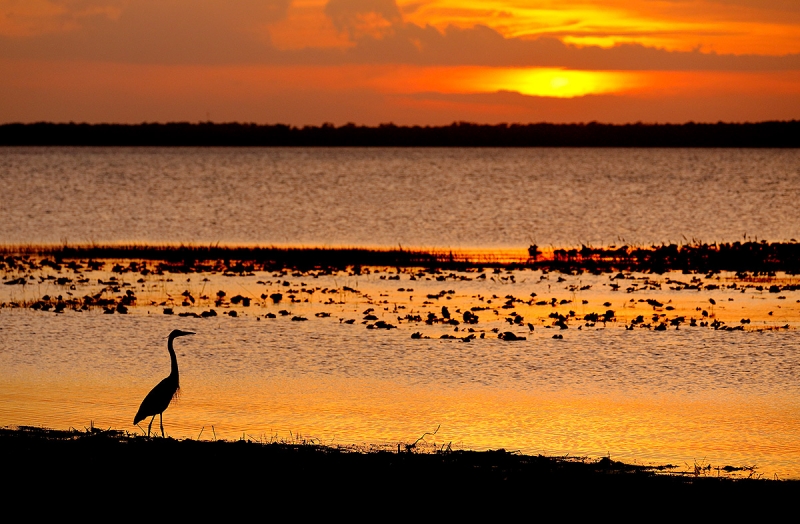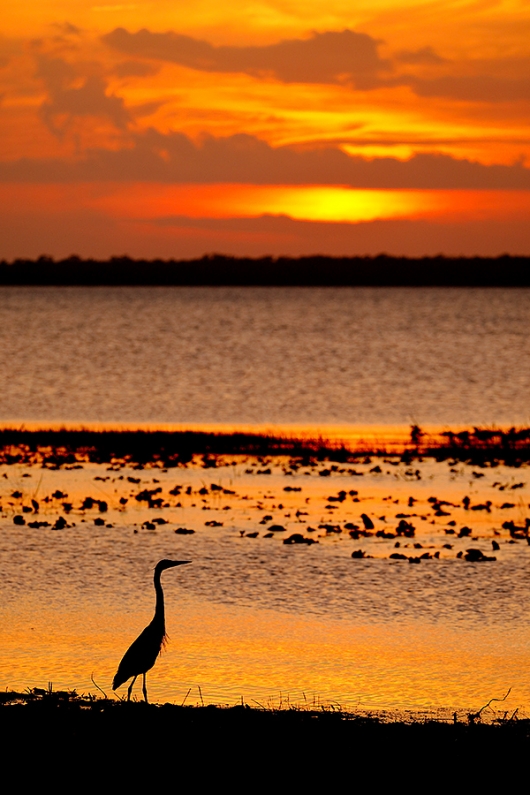December 4th, 2017 Stuff
On Sunday morning I had two alarms set for 3:15am. The both went off right on time. I finished packing for my DeSoto busman’s holiday and planned to leave at 4:15am. I woke Anita North and we were both coffied up and just about finished packing at 4:10am when I happened to look down and noted that my left rear tire was flat, but only 100% flat 🙂
I called the AAA at 4:15 and after a few fits and starts we were good to go just after 6am. Not wanting to miss the first 90 minutes of great light at DeSoto, we headed down to the lake to photograph the setting full moon and the usual suspects once the sun came up. We met friends Noel Heustis and Lee Sommie for lunch at the Neptune Grill in Gulfport before heading out to North Beach.
North Beach was dead. My afternoon back-up spot was not bad, and we enjoyed a killer sunset at my secret sunset spot but alas, there were no birds.
Featured Item
Canon EF 400mm f/4 IS DO Lens
The Lowest-ever BAA Price!
Pradip Thachile is offering a Used Canon EF 400mm f/4 IS DO lens in excellent condition for the BAA record low price of $2097.00. The sale includes the rear lens cap, the lens trunk, the original tough front lens cover, the lens strap, an Arca-Swiss compatible lens plate, and insured ground shipping via major courier to US addresses only. Your item will not ship until your check clears unless other arrangements are made.
Please contact Please contact Pradip via e-mail
I used this lens for several years with great success, especially for birds in flight and while working from various type of water craft. In addition, it would make a great prime super-telephoto lens for folks with a 7D II. The multiple-honored Gannets in Love was created with the old 400 DO. You can see that one and 13 other killer images that I made with my old 400 DO here. The title of that blog post is “The Canon 400mm f/4 IS DO Lens: Fourteen Images that Prove that the Internet Experts are Idiots.” Pradip’s lens is priced to sell. artie
5D Mark IV Still on Sale!
Right now you can purchase a Canon EOS 5D Mark IV with the BG-E20 Battery Grip for the crazy low price of $3199. I am not sure how long this Black Friday sale will last …
Blog regular Bill Hill was so excited when he read of this sale that he forgot to use my affiliate link. 🙂 He wrote, “I still think the 5D Mark IV sale is is too good to be true. I will believe it when it arrives. Thanks for the heads up.
Note: Bill went for the one with the free battery grip and the free Canon PIXMA PRO-100 Wireless Professional Inkjet Photo Printer.
The Streak
Today makes one hundred twenty-nine days in a row with a new educational blog post! This one took about an hour to prepare. With all of my upcoming free time (or not …), the plan right now is to break the current record streak of 480 … Good health and good internet connections willing.
Booking.Com
Booking.Com came through for me twice again recently with both the DeSoto Fall IPT and next July’s UK Puffins, Gannets, and Bempton Pre-trip room reservations. And all the rates were great. If you’d like to give Booking.Com a shot, click here and you will earn a $25 reward. Thanks to the many who have already tried and used this great service.


Gear Questions and Advice
Too many folks attending BAA IPTs and dozens of folks whom I see in the field, and on BPN, are–out of ignorance–using the wrong gear especially when it comes to tripods and more especially, tripod heads… Please know that I am always glad to answer your gear questions via e-mail. Those might include system, camera body, accessory, and lens choices and decisions.
|
|
|
This image was created down by the lake near my home at Indian Lake Estates, FL on the evening of Tuesday, November 28, 2017. I used the hand held Canon EF 100-400mm f/4.5-5.6L IS II USM lens (at 278mm) and my favorite dancing crane photography camera body, the Canon EOS 5D Mark IV. ISO 800. Evaluative metering +2/3 stop as framed: 1/3200 sec. at f/5.6 in Manual mode. AWB. 7:15am on a clear morning.
LensAlign/FocusTune micro-adjustment: extrapolated to -3.
As you can see in the DPP 4 screen capture above, Center Large Zone/AI Servo/Shutter Button AF performed to perfection.
Image DPP 4 Screen Capture
|
Kill Me Why Don’t You!
When I saw this image on the back of the camera moments after I made it, I said, “Kill me why don’t you! I felt that I should have zoomed out. But after a few minutes of studying the image on my Macbook Pro I realized that there might be a pretty good image there. See below.
|
|
Image #1: Sandhill Crane grass-throwing display/square crop
|
My First Square Crop
Above is my first square crop. I included the bird’s ankles. Yes, what you think are the bird’s knees are actually the ankles. The bones below the ankle correspond to the bones in our feet.
|
|
Image #2: Sandhill Crane grass-throwing display/tighter square crop
|
My Second Square Crop
Above here is my second square crop. With this one I cropped above the ankles and cropped more tightly from the left.
Multiple Choice Image Question
A- The original image as seen in the screen capture that opens this blog post is unsalvageable; you should have deleted it and then put a bullet in your head!
B- Image #1, the slightly wider image, is by far the stronger image.
C- Image #2, the slightly tighter image, is by far the stronger image.
D- There is a better crop available.
Whichever you choose, please give your reasons.
|
|
2017 in San Diego was a very good year ….
|
2018 San Diego 3 1/2-DAY BIRDS AS ART IPT #2: Sunday, JAN 28 thru and including the morning session on Wednesday, JAN 31, 2018 and a free morning session the day before the IPT starts: 3 1/2 days (+1/2!): $1699. Limit: 8: Openings: 7.
Meet and Greet at 6:30pm on the evening before the IPT begins; Saturday, Jan 27, 2018.
San Diego IPT #2: Shorter and Less Expensive!
Please remember: I go with one.
Join me in San Diego near the end of January to photograph the spectacular breeding plumage Brown Pelicans with their fire-engine red and olive green bill pouches; Brandt’s (usually nesting and displaying) and Double-crested Cormorants; breeding plumage Ring-necked Duck; other duck species possible including Lesser Scaup, Redhead, Wood Duck and Surf Scoter; a variety of gulls including Western, California, and the gorgeous Heerman’s, all in full breeding plumage; shorebirds including Marbled Godwit, Whimbrel, Willet, Sanderling and Black-bellied Plover; many others possible including Least, Western, and Spotted Sandpiper, Black and Ruddy Turnstone, Semipalmated Plover, and Surfbird; Harbor Seal (depending on the current regulations) and California Sea Lion; and Bird of Paradise flowers. And as you can see by studying the two IPT cards there are some nice bird-scape and landscape opportunities as well. Please note: formerly dependable, both Wood Duck and Marbled Godwit have been declining at their usual locations for the past two years …
|

|
|
San Diego offers a wealth of very attractive natural history subjects. With annual visits spanning more than three decades I have lot of experience there….
|
With gorgeous subjects just sitting there waiting to have their pictures taken, photographing the pelicans on the cliffs is about as easy as nature photography gets. With the winds from the east almost every morning there is usually some excellent flight photography. And the pelicans are almost always doing something interesting: preening, scratching, bill pouch cleaning, or squabbling. And then there are those crazy head throws that are thought to be a form of intra-flock communication. You can do most of your photography with an 80- or 100-400 lens …
Did I mention that there are wealth of great birds and natural history subjects in San Diego in winter?
|

|
|
Though the pelicans will be the stars of the show on this IPT there will be many other handsome and captivating subjects in wonderful settings.
|
The San Diego Details
This IPT will include four 3 1/2 hour morning photo sessions, three 2 1/2 hour afternoon photo sessions, three lunches, and after-lunch image review and Photoshop sessions. To ensure early starts, breakfasts will be your responsibility. Dinners are on your own so that we can get some sleep.
A $599 non-refundable deposit is required to hold your slot for this IPT. You can send a check (made out to “Arthur Morris) to us at BIRDS AS ART, PO Box 7245, Indian Lake Estates, FL, 33855. Or call Jim or Jennifer at the office with a credit card at 863-692-0906. Your balance, payable only by check, will be due on 11/1/2016. If we do not receive your check for the balance on or before the due date we will try to fill your spot from the waiting list. Please print, complete, and sign the form that is linked to here and shoot it to us along with your deposit check. If you register by phone, please print, complete and sign the form as noted above and either mail it to us or e-mail the scan. If you have any questions, please feel free to contact me via e-mail.
If In Doubt …
If in doubt about using the BAA B&H affiliate link correctly, you can always start your search by clicking here. Please note that the tracking is invisible. Web orders only. Please, however, remember to shoot me your receipt via e-mail.




Please Remember to use my Affiliate Links and to Visit the New BAA Online Store 🙂
To show your appreciation for my continuing efforts here, we ask, as always, that you get in the habit of using my B&H affiliate links on the right side of the blog for all of your photo and electronics purchases. Please check the availability of all photographic accessories in the New BIRDS AS ART Online Store, especially the Mongoose M3.6 tripod head, Wimberley lens plates, Delkin flash cards and accessories, and LensCoat stuff.
As always, we sell only what I have used, have tested, and can depend on. We will not sell you junk. We know what you need to make creating great images easy and fun. And please remember that I am always glad to answer your gear questions via e-mail.
I would of course appreciate your using our B&H affiliate links for all of your major gear, video, and electronic purchases. For the photographic stuff mentioned in the paragraph above, and for everything else in the new store, we, meaning BAA, would of course greatly appreciate your business. Here is a huge thank you to the many who have been using our links on a regular basis and those who will be visiting the New BIRDS AS ART Online Store as well.
Facebook
Be sure to like and follow BAA on Facebook by clicking on the logo link upper right. Tanks a stack.
Typos
In all blog posts and Bulletins, feel free to e-mail or to leave a comment regarding any typos or errors. Just be right :).
December 3rd, 2017 Stuff
Friend Anita North — visiting from Toronto — and I, got up really early to search for a tall skinny perch tree to plant in the lake. A few that we had spotted previously did not work. We wound up checking out a badly burned wood lot and some looked decent. As I walked around with the hand saw and work gloves I spotted the perfect perch. Lying on the ground. No sawing required. We got it in my SUV, headed down to the lake, and had it planted in short order. With fast and amazing results.
I was glad to learn that the sale of Mike Newman’s Canon 600mm f/4L IS II lens is pending.
The rest of the day was filled with UFC stuff on Tivo, several of the good college games, and packing for my busman’s holiday trip to DeSoto. I swam 1/2 mile late in the day; the pool was down 5 degrees in one day from 83 to 78. And yes, lots of cobra push-ups.
5D Mark IV Still on Sale!
Right now you can purchase a Canon EOS 5D Mark IV with the BG-E20 Battery Grip for the crazy low price of $3199. I am not sure how long this Black Friday sale will last …
Blog regular Bill Hill was so excited when he read of this sale that he forgot to use my affiliate link. 🙂 He wrote, “I still think the 5D Mark IV sale is is too good to be true. I will believe it when it arrives. Thanks for the heads up.
Note: Bill went for the one with the free battery grip and the free Canon PIXMA PRO-100 Wireless Professional Inkjet Photo Printer.
The Streak
Today makes one hundred twenty-eight days in a row with a new educational blog post! This one took about an hour to prepare. With all of my upcoming free time (or not …), the plan right now is to break the current record streak of 480 … Good health and good internet connections willing.
Booking.Com
Booking.Com came through for me twice again recently with both the DeSoto Fall IPT and next July’s UK Puffins, Gannets, and Bempton Pre-trip room reservations. And all the rates were great. If you’d like to give Booking.Com a shot, click here and you will earn a $25 reward. Thanks to the many who have already tried and used this great service.


Gear Questions and Advice
Too many folks attending BAA IPTs and dozens of folks whom I see in the field, and on BPN, are–out of ignorance–using the wrong gear especially when it comes to tripods and more especially, tripod heads… Please know that I am always glad to answer your gear questions via e-mail. Those might include system, camera body, accessory, and lens choices and decisions.
|
|
|
This image was created down by the lake by my home at ILE on the morning of Friday, December 1, 2017 with the Induro GIT304L Grand Series 3 Stealth Carbon Fiber Tripod/Mongoose M3.6-mounted Canon EF 600mm f/4L IS II USM lens, the Canon Extender EF 1.4X III, and my favorite crane photography camera body, the Canon EOS 5D Mark IV. ISO 400. Evaluative metering + 2/3 stop as framed: 1/1600 sec. at f/7.1 in Manual mode. AWB on a clear sunny day at 8:34am.
LensAlign/FocusTune micro-adjustment: -1.
Left Large Zone/AI Servo/Expand/Shutter Button AF was active at the moment of exposure. The system selected an l-shaped array of AF points the fell on the bird’s neck well below and behind the bird’s eye as seen in the DPP 4 screen capture below.
Sandhill Crane, adult head portrait
Be sure to click on the image to see a larger version.
|
Could This Be a Perfect Photograph?
All that I did with this image after the RAW conversion in DPP 4 was to clean a few specks off the bill. For me, the composition is dead-solid perfect, as are the head and bill angles. (Note that the head is turned about 1/2 degree toward us.) And as the bird was feeding in the water, the bill was as close to immaculate as you are gonna get. The bird itself was a gorgeous individual with a bright red crown and a pristine, pearly white cheek patch. I had many similar images but for whatever reason or reasons, this one seemed most alive.
Image Question?
Is this a perfect image? Why or why not? Please note that it would like have zero chance to do anything in any major international contest.
|
|
This is the DPP 4 Screen Capture for today’s featured image
|
The DPP 4 Screen Capture
Note that with the AF points a bit on this side of the plane of the crane’s eyes that stopping down from f/5.6 to f/7.1 paid big dividends not only in terms of the sharp eye but in sharpening up the feathers of the crown and on the back of the head. (See the tight face crop below for evidence of that).
DPP 4 Tips
#1: This is a repeat tip: you can bring really warm WHITEs a bit closer to neutral by moving the Color fine-tune dot toward BLUE and away from RED while still retaining the look of early morning light. Note that after the adjustment the RGB values for the brightest WHITEs still show a bit more RED: 239, 238, 235.
#2: This is a brand new tip. With the WHITEs fairly bright, I opted to move the Highlight slider only 1/2 stop to the left to -0.5 to retain the bright WHITEs while restoring a bit of feather detail. (I would usually go -1 by rote …)
|
|
This is a tight crop of the face and crown of today’s featured image
|
A Tight Crop
Note the incredible detail in the crown and in the grey feathers of the rear crown. 5D IV image quality is superb.
|
|
2017 in San Diego was a very good year ….
|
2018 San Diego 3 1/2-DAY BIRDS AS ART IPT #2: Sunday, JAN 28 thru and including the morning session on Wednesday, JAN 31, 2018 and a free morning session the day before the IPT starts: 3 1/2 days (+1/2!): $1699. Limit: 8: Openings: 7.
Meet and Greet at 6:30pm on the evening before the IPT begins; Saturday, Jan 27, 2018.
San Diego IPT #2: Shorter and Less Expensive!
Please remember: I go with one.
Join me in San Diego near the end of January to photograph the spectacular breeding plumage Brown Pelicans with their fire-engine red and olive green bill pouches; Brandt’s (usually nesting and displaying) and Double-crested Cormorants; breeding plumage Ring-necked Duck; other duck species possible including Lesser Scaup, Redhead, Wood Duck and Surf Scoter; a variety of gulls including Western, California, and the gorgeous Heerman’s, all in full breeding plumage; shorebirds including Marbled Godwit, Whimbrel, Willet, Sanderling and Black-bellied Plover; many others possible including Least, Western, and Spotted Sandpiper, Black and Ruddy Turnstone, Semipalmated Plover, and Surfbird; Harbor Seal (depending on the current regulations) and California Sea Lion; and Bird of Paradise flowers. And as you can see by studying the two IPT cards there are some nice bird-scape and landscape opportunities as well. Please note: formerly dependable, both Wood Duck and Marbled Godwit have been declining at their usual locations for the past two years …
|

|
|
San Diego offers a wealth of very attractive natural history subjects. With annual visits spanning more than three decades I have lot of experience there….
|
With gorgeous subjects just sitting there waiting to have their pictures taken, photographing the pelicans on the cliffs is about as easy as nature photography gets. With the winds from the east almost every morning there is usually some excellent flight photography. And the pelicans are almost always doing something interesting: preening, scratching, bill pouch cleaning, or squabbling. And then there are those crazy head throws that are thought to be a form of intra-flock communication. You can do most of your photography with an 80- or 100-400 lens …
Did I mention that there are wealth of great birds and natural history subjects in San Diego in winter?
|

|
|
Though the pelicans will be the stars of the show on this IPT there will be many other handsome and captivating subjects in wonderful settings.
|
The San Diego Details
This IPT will include four 3 1/2 hour morning photo sessions, three 2 1/2 hour afternoon photo sessions, three lunches, and after-lunch image review and Photoshop sessions. To ensure early starts, breakfasts will be your responsibility. Dinners are on your own so that we can get some sleep.
A $599 non-refundable deposit is required to hold your slot for this IPT. You can send a check (made out to “Arthur Morris) to us at BIRDS AS ART, PO Box 7245, Indian Lake Estates, FL, 33855. Or call Jim or Jennifer at the office with a credit card at 863-692-0906. Your balance, payable only by check, will be due on 11/1/2016. If we do not receive your check for the balance on or before the due date we will try to fill your spot from the waiting list. Please print, complete, and sign the form that is linked to here and shoot it to us along with your deposit check. If you register by phone, please print, complete and sign the form as noted above and either mail it to us or e-mail the scan. If you have any questions, please feel free to contact me via e-mail.
If In Doubt …
If in doubt about using the BAA B&H affiliate link correctly, you can always start your search by clicking here. Please note that the tracking is invisible. Web orders only. Please, however, remember to shoot me your receipt via e-mail.




Please Remember to use my Affiliate Links and to Visit the New BAA Online Store 🙂
To show your appreciation for my continuing efforts here, we ask, as always, that you get in the habit of using my B&H affiliate links on the right side of the blog for all of your photo and electronics purchases. Please check the availability of all photographic accessories in the New BIRDS AS ART Online Store, especially the Mongoose M3.6 tripod head, Wimberley lens plates, Delkin flash cards and accessories, and LensCoat stuff.
As always, we sell only what I have used, have tested, and can depend on. We will not sell you junk. We know what you need to make creating great images easy and fun. And please remember that I am always glad to answer your gear questions via e-mail.
I would of course appreciate your using our B&H affiliate links for all of your major gear, video, and electronic purchases. For the photographic stuff mentioned in the paragraph above, and for everything else in the new store, we, meaning BAA, would of course greatly appreciate your business. Here is a huge thank you to the many who have been using our links on a regular basis and those who will be visiting the New BIRDS AS ART Online Store as well.
Facebook
Be sure to like and follow BAA on Facebook by clicking on the logo link upper right. Tanks a stack.
Typos
In all blog posts and Bulletins, feel free to e-mail or to leave a comment regarding any typos or errors. Just be right :).
December 2nd, 2017 Stuff
On Friday I made some really nice tight head, and head and neck portraits of Sandhill Cranes down by the lake near my home at Indian Lake Estates, FL. With gorgeous blue water backgrounds. Surely my best ever. In the afternoon I took a ride to River Ranch to look for some birds, most particularly, nesting Burrowing Owls. But River Ranch is a big place. I found nothing except for a slew of wading birds in a retention pond behind a tall chain link fence …
If you know the location of the alleged Burrowing Owls at River Ranch please shoot me an e-mail.
On Friday I took a day off from the pool but continued with my cobra pushups every two hours.
Click on the image to learn of some amazing Apple deals from B&H: I-pads, MacBook Pros, and Display Monitors; one day only!
5D Mark IV Still on Sale!
Right now you can purchase a Canon EOS 5D Mark IV with the BG-E20 Battery Grip for the crazy low price of $3199. I am not sure how long this Black Friday sale will last …
Blog regular Bill Hill was so excited when he read of this sale that he forgot to use my affiliate link. 🙂 He wrote, “I still think the 5D Mark IV sale is is too good to be true. I will believe it when it arrives. Thanks for the heads up.
Note: Bill went for the one with the free battery grip and the free Canon PIXMA PRO-100 Wireless Professional Inkjet Photo Printer.
The Streak
Today makes one hundred twenty-seven days in a row with a new educational blog post! This one took about 90 minutes to prepare. With all of my upcoming free time (or not …), the plan right now is to break the current record streak of 480 … Good health and good internet connections willing.
Booking.Com
Booking.Com came through for me twice again recently with both the DeSoto Fall IPT and next July’s UK Puffins, Gannets, and Bempton Pre-trip room reservations. And all the rates were great. If you’d like to give Booking.Com a shot, click here and you will earn a $25 reward. Thanks to the many who have already tried and used this great service.


Gear Questions and Advice
Too many folks attending BAA IPTs and dozens of folks whom I see in the field, and on BPN, are–out of ignorance–using the wrong gear especially when it comes to tripods and more especially, tripod heads… Please know that I am always glad to answer your gear questions via e-mail. Those might include system, camera body, accessory, and lens choices and decisions.
|
|
|
This image was created down by the lake near my home at Indian Lake Estates, FL on the evening of Tuesday, November 28, 2017. I used the hand held Canon EF 100-400mm f/4.5-5.6L IS II USM lens (at 234mm) and my favorite silhouette photography camera body, the Canon EOS 5D Mark IV. ISO 800. Evaluative metering +1/3 stop as framed: 1/800 sec. at f/6.3 in Av mode. WB: K7500. Right at sunset. .
LensAlign/FocusTune micro-adjustment: extrapolated to -3.
Center AF point/AI Servo/Expand/Rear Button AF on the heron and re-compose. When you use Rear Button and re-compose, no AF point is illuminated in red in DPP 4. Click here to see the latest version of the Rear Focus Tutorial. Click on the image to see a larger version.
Image #1: Great Blue Heron at sunset, horizontal
|
The Timeline …
5:28pm: “Hey Jim, Though the sunset looks like a fizzle right now, I am gonna drive down to the lake and see if anything develops.”
5:29pm: As I am driving down Park Boulevard the sun peeks out from under a cloud on the western horizon and the sky brightens.
5:31pm: As I get out of the car I see a Great Blue Heron perfectly positioned along the shore of the lake to the left of the pier.
5:32pm: I grab my 100-400 II and set ISO 800 with +1 stop EC at f/6.3 in Av mode.
5:33pm: I create a few horizontals and note that despite the fact that the sun is well-muted it is flashing as over-exposed.
5:33:30pm. I change the EC to +1/3 stop and create a few more horizontals.
5:34pm: I change my position slightly to create a few verticals.
5:34:15pm: The bird flew away.
5:34:30: I add my 1.4X III ii TC and create two sky scenics. In all I created only 18 images. I kept three of them.
5:35pm: As I get back in my Sequoia, I blow on the end of my lens as a gunfighter would have done way back when.
5:38pm: Ten minutes after I left, I get back to my house and say to Jim, “I was pretty lucky.”
|
|
|
This image was also and obviously created down by the lake near my home at Indian Lake Estates, FL on the evening of Tuesday, November 28, 2017. I used the hand held Canon EF 100-400mm f/4.5-5.6L IS II USM lens (at 300mm) and my favorite silhouette photography camera body, the Canon EOS 5D Mark IV. ISO 800. Evaluative metering +1/3 stop as framed: 1/800 sec. at f/6.3 in Av mode. WB: K7500. Right at sunset.
LensAlign/FocusTune micro-adjustment: extrapolated to -4.
Center AF point/AI Servo/Expand/Rear Button AF on the heron and re-compose. When you use Rear Button and re-compose, no AF point is illuminated in red in DPP 4. Click here to see the latest version of the Rear Focus Tutorial. Click on the image to see a larger version.
Image #2: Great Blue Heron at sunset, vertical
|
Image Perspective Question
For both the horizontal and the vertical images I got as high as possible. For the horizontal I got up on the pier. For the vertical where I moved to my left and climbed atop a foot high platform/cover of some sort. Why was it necessary to get just a bit higher for each of the images?
Your Favorite?
Please take a moment to leave a comment and let us know which image you think is the stronger of the two, Image #1, the horizontal, or Image #2, the vertical. Be sure to let us know why you made your choice. Unlike many of the recent comparisons, I think that there is a clear winner here. I will share my thoughts with you in a day or four.
|
|
2017 in San Diego was a very good year ….
|
2018 San Diego 3 1/2-DAY BIRDS AS ART IPT #2: Sunday, JAN 28 thru and including the morning session on Wednesday, JAN 31, 2018 and a free morning session the day before the IPT starts: 3 1/2 days (+1/2!): $1699. Limit: 8: Openings: 7.
Meet and Greet at 6:30pm on the evening before the IPT begins; Saturday, Jan 27, 2018.
San Diego IPT #2: Shorter and Less Expensive!
Please remember: I go with one.
Join me in San Diego near the end of January to photograph the spectacular breeding plumage Brown Pelicans with their fire-engine red and olive green bill pouches; Brandt’s (usually nesting and displaying) and Double-crested Cormorants; breeding plumage Ring-necked Duck; other duck species possible including Lesser Scaup, Redhead, Wood Duck and Surf Scoter; a variety of gulls including Western, California, and the gorgeous Heerman’s, all in full breeding plumage; shorebirds including Marbled Godwit, Whimbrel, Willet, Sanderling and Black-bellied Plover; many others possible including Least, Western, and Spotted Sandpiper, Black and Ruddy Turnstone, Semipalmated Plover, and Surfbird; Harbor Seal (depending on the current regulations) and California Sea Lion; and Bird of Paradise flowers. And as you can see by studying the two IPT cards there are some nice bird-scape and landscape opportunities as well. Please note: formerly dependable, both Wood Duck and Marbled Godwit have been declining at their usual locations for the past two years …
|

|
|
San Diego offers a wealth of very attractive natural history subjects. With annual visits spanning more than three decades I have lot of experience there….
|
With gorgeous subjects just sitting there waiting to have their pictures taken, photographing the pelicans on the cliffs is about as easy as nature photography gets. With the winds from the east almost every morning there is usually some excellent flight photography. And the pelicans are almost always doing something interesting: preening, scratching, bill pouch cleaning, or squabbling. And then there are those crazy head throws that are thought to be a form of intra-flock communication. You can do most of your photography with an 80- or 100-400 lens …
Did I mention that there are wealth of great birds and natural history subjects in San Diego in winter?
|

|
|
Though the pelicans will be the stars of the show on this IPT there will be many other handsome and captivating subjects in wonderful settings.
|
The San Diego Details
This IPT will include four 3 1/2 hour morning photo sessions, three 2 1/2 hour afternoon photo sessions, three lunches, and after-lunch image review and Photoshop sessions. To ensure early starts, breakfasts will be your responsibility. Dinners are on your own so that we can get some sleep.
A $599 non-refundable deposit is required to hold your slot for this IPT. You can send a check (made out to “Arthur Morris) to us at BIRDS AS ART, PO Box 7245, Indian Lake Estates, FL, 33855. Or call Jim or Jennifer at the office with a credit card at 863-692-0906. Your balance, payable only by check, will be due on 11/1/2016. If we do not receive your check for the balance on or before the due date we will try to fill your spot from the waiting list. Please print, complete, and sign the form that is linked to here and shoot it to us along with your deposit check. If you register by phone, please print, complete and sign the form as noted above and either mail it to us or e-mail the scan. If you have any questions, please feel free to contact me via e-mail.
If In Doubt …
If in doubt about using the BAA B&H affiliate link correctly, you can always start your search by clicking here. Please note that the tracking is invisible. Web orders only. Please, however, remember to shoot me your receipt via e-mail.




Please Remember to use my Affiliate Links and to Visit the New BAA Online Store 🙂
To show your appreciation for my continuing efforts here, we ask, as always, that you get in the habit of using my B&H affiliate links on the right side of the blog for all of your photo and electronics purchases. Please check the availability of all photographic accessories in the New BIRDS AS ART Online Store, especially the Mongoose M3.6 tripod head, Wimberley lens plates, Delkin flash cards and accessories, and LensCoat stuff.
As always, we sell only what I have used, have tested, and can depend on. We will not sell you junk. We know what you need to make creating great images easy and fun. And please remember that I am always glad to answer your gear questions via e-mail.
I would of course appreciate your using our B&H affiliate links for all of your major gear, video, and electronic purchases. For the photographic stuff mentioned in the paragraph above, and for everything else in the new store, we, meaning BAA, would of course greatly appreciate your business. Here is a huge thank you to the many who have been using our links on a regular basis and those who will be visiting the New BIRDS AS ART Online Store as well.
Facebook
Be sure to like and follow BAA on Facebook by clicking on the logo link upper right. Tanks a stack.
Typos
In all blog posts and Bulletins, feel free to e-mail or to leave a comment regarding any typos or errors. Just be right :).
|
|







